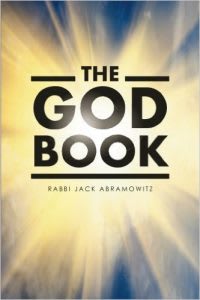2.17 The Prophecy of Moses
Sources refer to the Ramchal's Derech Hashem.
-----------------------------------------
We have spoken of the full level of prophecy but that really refers to all prophets but one. There was a second, higher level that was only achieved by Moses. The Torah informs us of this when God says, “If there is a prophet among you, I, Hashem, appear to him in a vision and speak with him in a dream. My servant Moses is not so… with him I speak mouth to mouth, clearly and not in an obscured manner; and he perceives the form of God” (Numbers 12:6-8). [III, 5.1] Every other prophet received his prophecies in a dream or a vision. (While God deemed a person’s ability to dream an appropriate means to convey prophecy, this does not make prophecy identical to dreaming.) [III, 5.2]
When a prophetic influence starts to fall on a person, he loses control of both his mental and his physical faculties. He goes into a trance, as if asleep, and that’s when he can receive a prophetic vision. This can happen to a person while he is awake or when he is already asleep. He remains in this state only very briefly and he returns to normal very quickly. [III, 5.3] As noted earlier (section 14), prophecy is perceived obscured to some degree, as if seen through a lens, though each prophet experiences a different degree of clarity depending on his personal level. Just as God’s glory is filtered through such a lens, the information conveyed through prophecy is translated into metaphors and allegories. The prophet is aware that this filtering of the experience is happening. [III, 5.4] The prophecy experienced by Moses was not this way.
For one thing, Moses did not lose control of his senses or need to enter a trance in order to receive a prophecy. Furthermore, revelation did not come to Moses through the medium of a dream. He was able to receive prophecy while wide awake and in full control. Additionally, the prophecies of Moses were not obscured. Rather than the metaphors and allegories experienced by other prophets, Moses received his prophecies clearly and directly.
Of course, even Moses was only human, and therefore limited in his ability to perceive God. He also perceived God’s glory as if seen through a lens, but the “lens” of Moses was highly polished, not dull and cloudy. He perceived God’s glory more completely and more clearly than any other prophet. Because of Moses’ unique prophetic abilities, he was able to exceed all other prophets in the volume of information that he conveyed. [III, 5.5]
Another difference between Moses and other prophets is that Moses could initiate the experience, as opposed to all the other prophets, who could only prophesize when God took the initiative to address them. Other prophets could only know that which God chose to reveal to them, while all the secrets of the universe were an open book before Moses. He was given permission to investigate any matter, as per Numbers 12:7, “He is trusted throughout My house.” [III, 5.6]
Prophets received visions that included not only the message that God wished to convey but also information about the transmission process itself. They also gained insights into God, as knowledge of His greatness was integral to every prophecy.
The prophets understood that God cannot be seen and that any visions they perceived were crafted by Him for the prophecy. The Torah addresses this when it says, “You did not see any image, just a voice” (Deuteronomy 4:12). At Sinai, the entire nation understood that God cannot be perceived through the faculty of sight. With that in mind, they could understand such prophetic metaphors as “They ‘saw’ the God of Israel” (Exodus 24:10). Anything “seen” in a prophetic vision is actually a visual manifestation of the power of speech, as in Exodus 20:15, “the entire nation saw the voices.” In this manner, the experience of prophecy further enlightens the recipient as to the nature of God. [III, 5.7]

